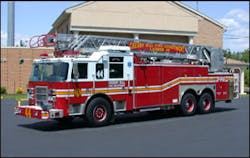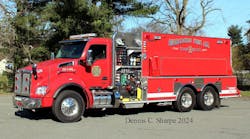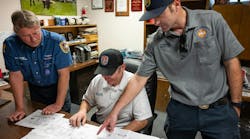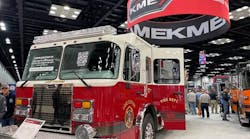In the first article we presented some concepts regarding the process of designing and writing specifications for a new piece of apparatus. For a variety of reasons apparatus committees need to have adequate time to define the fire departments specific needs, research individual components and develop an outline listing of specific design criteria.
While there are no standards or guidelines for timetables, it is reasonable to expect that it will take approximately six to twelve months to conduct this research and develop the preliminary specifications for the apparatus. Sometimes apparatus committees place heavy reliance on the apparatus salesmen for their research. This may not be the best course of action, for a variety of reasons.
However this could be the time that the apparatus architect could be a tremendous resource and could save valuable time in the preparation of your apparatus specifications The quality of the final product will in large part depend upon how much time is devoted to the planning and research portion of the specifications and would be favorably impacted by the apparatus architect.
The number of personnel and the make up of the committee is critical to the overall success of the process. The ideal number of personnel comprising the apparatus committee is five to seven people. Many more than this can make the group unwieldy and difficult to manage.
With a large group it may to difficult to manage the personalities within the committee and frequent disagreements can disrupt the continuity and forward progress of the group. On the other hand, fewer people can restrict the free flow of ideas and innovations and could provide a forum where one or two people can dominate the group.
It is important to have several levels within the department represented on the committee. Company officers, drivers or engineers as well as firefighters can provide valuable input from their prospective regarding the overall design. Department personnel responsible for health and safety as well as the department mechanic can provide invaluable input to assist in the design process.
The New York City Fire Department recognized this many years ago and has an apparatus committee in place with equal representation among officers, firefighters, and driver/operators. Along with these individuals are representatives from the division of safety and the fleet maintenance division.
Past maintenance records can be reviewed to evaluate components or assemblies that have failed or required frequent maintenance. Just about everyone has a favorite component that they would like to have installed on the new apparatus, however this will only lead to a rig with a bunch of mismatched components where everyone can point to something and say "They bought that because of me".
Once a group facilitator is appointed, this person may wish to break down the task by assigning each individual to research major components such as the power train, fire pump and plumbing, compartment layout and equipment requirements, emergency lighting and generator requirements and so forth. Each person can formally research the various options within each component group and more clearly define the fire departments needs and how the manufacturers offerings can be integrated into the final specifications.
Fire Department administrative personnel may wish to participate in the specification development and their input should not be overlooked. Appointing personnel to the apparatus committee can in itself become a daunting task unless the individual responsible for the formation of the group clearly has the responsibility and organizational authority to initiate these actions.
A well meaning initial action can get the entire process off on the wrong foot if someone within the organization feels that he or she is being excluded from providing input or offering another perspective to the process.
There are several techniques that can be utilized to reduce the opportunity that some individual or group of personnel within the department can be alienated by the committee selection process. One method is to provide an avenue for input by any member to direct information and comments to the appointed committee. A log book or e-mail site can be designated to allow formal comments and suggestions to be submitted to the apparatus committee. Minutes of all meetings should be prominently posted to provide updates back to the members of the department as to the progress of the committee. A feedback system should be developed to provide for a committee response back to the members who provide input to the group and how their comments were taken under consideration. Having an apparatus architect on hand, that has gone though this part of the process before can help smooth out the rough edges and get your committee of to a great start.
In the next installment of The Apparatus Architect we will get you started with the process of gather information for your new apparatus.
Related:






